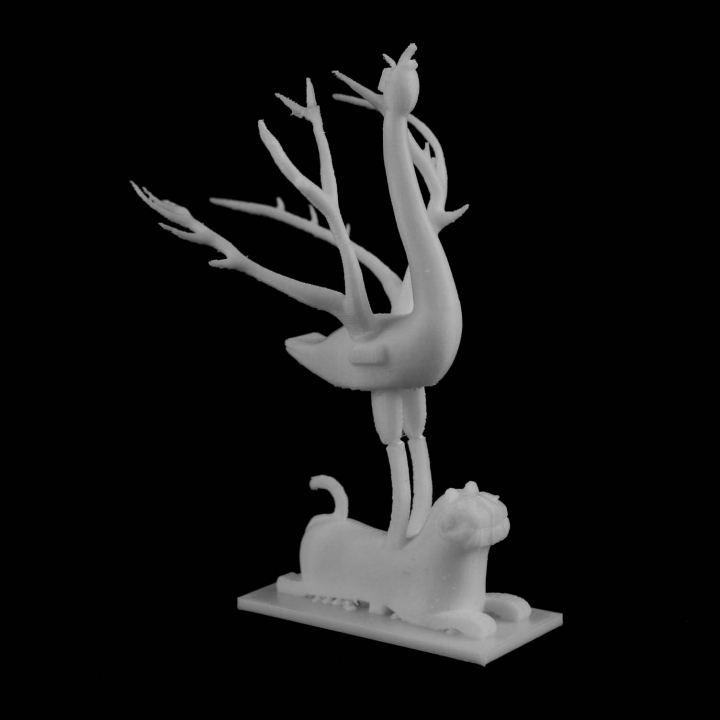
Phoenix at the Guimet Museum, Paris
myminifactory
Human: A fiery bird known as a phoenix is reborn over and over, its existence marked by a long lifespan of more than 1,400 years in some legends. Associated with the sun, this bird regenerates itself from the ashes of its predecessor, often dying in a blaze of flames before rising anew. In early Christianity, the phoenix became a symbol, representing renewal and the cyclical nature of life. Some versions of the legend depict the bird's demise as a fiery display, while others show it decomposing before being reborn. Historians such as Herodotus, Lucan, Pliny the Elder, Pope Clement I, Lactantius, Ovid, and Isidore of Seville have contributed to the retelling of the phoenix myth over time. In the historical record, this bird can symbolize various aspects of life, including renewal, the sun, time, metempsychosis, consecration, resurrection, and life in paradise. Images of an ancient bird similar to the phoenix have appeared in China for over 8,000 years, dating back to the Hongshan neolithic period. These images were often found on jade and pottery motifs, as well as decorating bronze and jade figurines. Some believe that these birds may have been a good-luck symbol among eastern tribes of ancient China. During the Han Dynasty (2,200 years ago), two phoenixes, one male (feng) and the other female (huang), were often depicted together facing each other. Later, during the Yuan Dynasty, the two terms merged to become fenghuang, representing the empress when paired with a dragon as the emperor. From the Jiajing Emperor's period onwards, a pair of phoenixes was differentiated by their tail feathers, typically forming a closed circle pattern. A male phoenix is identified by five long serrated tail feathers or "filaments," while a female phoenix has what appears to be one but is usually two curling or tendrilled tail feathers. Also during this period, the fenghuang was used as a symbol representing the direction south, portrayed through a male and female facing each other with their feathers of five fundamental colors: black, white, red, green, and yellow. These colors are said to represent Confucius's five virtues: Ren (benevolence, charity, and humanity), Yi (honesty and uprightness), Zhi (knowledge), Xin (faithfulness and integrity), and Li (correct behavior, propriety, good manners, politeness, ceremony, worship). The phoenix represented power sent from the heavens to the Empress. If a phoenix was used to decorate a house, it symbolized that loyalty and honesty were in the people who lived there. Alternatively, a phoenix only stays when the ruler is without darkness and corruption (political clarity). This bird is one of the four principal mythological beasts and is associated with the Chinese Empress. It embodies the South and is often depicted as red-colored.
With this file you will be able to print Phoenix at the Guimet Museum, Paris with your 3D printer. Click on the button and save the file on your computer to work, edit or customize your design. You can also find more 3D designs for printers on Phoenix at the Guimet Museum, Paris.
